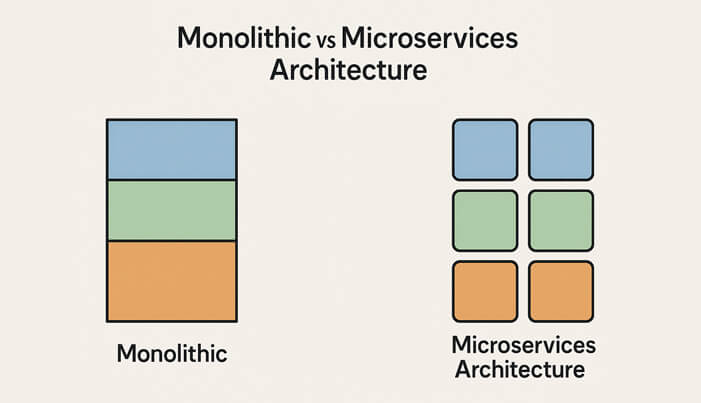Monolithic vs Microservices Architecture: Which One Fits Your App?
In today’s rapidly evolving tech landscape, choosing the right architecture for your application is more important than ever. Two major paradigms dominate modern backend development: Monolithic and Microservices architectures. While both can power scalable and high-performing applications, they take drastically different approaches to structuring and managing code.
Let’s explore the core differences, benefits, drawbacks, and when you should choose one over the other.
What is Monolithic Architecture?
A monolithic application is built as a single, indivisible unit. All business logic, database access, UI rendering, and background tasks reside in one codebase and run as a single service.
Pros:
- Simple to develop and deploy
- Easier to debug in early stages
- Minimal network latency (everything is local)
- Great for MVPs or small projects
Cons:
- Codebase becomes harder to manage as the app grows
- Scaling means scaling everything, not just the hot parts
- Harder for teams to work independently
- Risk of a single point of failure
What is Microservices Architecture?
Microservices break the application into independent services, each responsible for a specific business function. These services communicate over a network, often using REST APIs, gRPC, or messaging queues.
Pros:
- High modularity — easy to manage and deploy independently
- Services can be scaled individually
- Each microservice can use different tech stacks
- Better fault isolation
Cons:
- More complex to set up and manage
- Requires robust DevOps and monitoring
- Higher latency due to network calls
- Challenges in data consistency
Monolith vs Microservices: Key Differences
| Feature | Monolithic | Microservices |
|---|---|---|
| Codebase | Single, unified | Multiple, separate services |
| Deployment | Single deployment unit | Each service deploys independently |
| Scalability | Whole app scales together | Scale only the services you need |
| Communication | In-process (fast) | Network-based (REST, RPC, MQ) |
| Tech Stack | Uniform across app | Flexible per service |
| Team Structure | Centralized team | Decentralized, team-per-service |
Which Architecture Should You Use?
Go Monolithic if:
- You’re building a small/medium application
- You need to deliver quickly (e.g., MVP)
- Your team is small or just starting out
Go Microservices if:
- Your app is large or expected to scale heavily
- You have multiple teams working in parallel
- You want to isolate features for better fault tolerance
- You’re investing in long-term DevOps and CI/CD
Final Thoughts
There’s no one-size-fits-all solution. Startups often begin with a monolith and gradually migrate to microservices as their team and user base grow. The key is to choose the architecture that aligns with your current needs and future plans.
Need help choosing or migrating to the right architecture? Get in touch — we help teams build scalable, maintainable systems with the right design choices.




